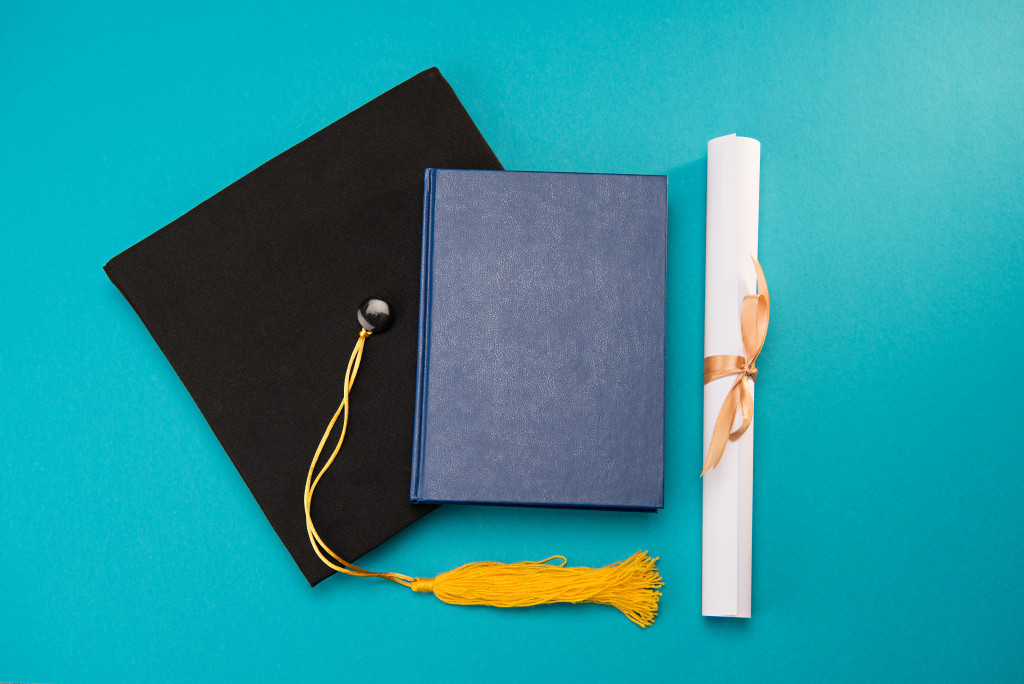Tradition is rare in a world dominated by advancements and innovation. However, the way we perform education seems unchanged. Sure, we can count technological advancements in audio-visual learning as a significant change. However, the way teachers teach their students remains untouched. The face-to-face classroom setup is incredibly effective, which is why academic institutions continue to rely on that strategy. However, the pandemic changed everything.
As part of efforts to limit the spread of the Coronavirus, academic institutions halted face-to-face classroom setups. Despite vaccine creations and lowered cases of infection and deaths, the traditional education system remains highly risky. When you consider that students are the ones in danger, forcing classroom setups becomes even more dangerous. However, education must never stop. Younger generations need to learn in their developmental years. To achieve that, academic institutions started giving education the revolution it desperately needed amid the pandemic.
The Unexpected Challenge
The pandemic forced everyone to stay at home. Public places can be dangerous, especially as medical organizations learn that the virus is airborne. Unfortunately, social distancing protocols and quarantine lockdowns also mean the public establishments have to shut down operations. Academic institutions are among those places. Traditional classroom setups house 20 or more people inside one room, which means a Covid-positive person might infect everyone within the area.
The danger remains present even when restrictions relax. Students’ lives are at stake, especially since vaccines might not be available for younger people. Traditional classroom setups, while providing the best system for education, are impossible to perform amid the pandemic. The unexpected challenge opened people’s eyes to the truth: there is no alternative yet to face-to-face learning. However, humanity needed to adjust, and adjust we did.
Technology: The Savior of Education
Technology provided plenty of features and programs to help people thrive amid the pandemic. People can now shop at grocery stores and pharmacies through their mobile app, never leaving their homes to do them. It only seems logical for academic institutions to follow the format to maintain continuity. As a result, technology lent its helping hand.
Computers, laptops, microphones, and speakers are the devices necessary to accomplish the alternative. Technology even contributed to the small actions, ensuring that students could perform things they would do inside the classroom. Note-taking becomes easier through several online and computer document apps. Communication is something that email and social media accomplished even before the pandemic.
However, there is nothing more revolutionary than online classes. Teachers and students can all go to a virtual conference room to pursue education. Online classes quickly became the savior of education, imitating the most basic format that made education effective: teachers and students seeing each other.

The Future of Education in Virtual Space
While online classes provide an effective alternative, it is far from perfect. Internet connection issues, lack of resources, and distraction-prone environments remain problems that make online education a poor man’s version of the traditional classroom setup. However, those are issues that technology can solve given time and attention. The interactions between teachers and students might be more effective for learning, especially when the lessons involve an environment. Fortunately, extended reality can provide students with a simulation. Virtual space can act as the classroom, setting a path for pre-recorded programs from teachers with multiple scenarios.
We can use medical schools as an example, specifically when students use a cadaver. Instead of an actual corpse, med students can practice with a simulated version of the human body. They can prepare themselves to become better doctors while ensuring they can commit mistakes without consequences. The only challenge here would be creating thousands of scenarios depending on the actions of the student. It might be a time-consuming and brain-wracking attempt, but it shows the potential of future education.
Do We Need Traditional Learning?
The online class is a great alternative to traditional classroom setups because there is no other choice. If the pandemic didn’t happen, chances are that students will remain inside the classroom to learn. There are so many things that make the classroom set up an effective learning environment. Collaboration, socialization, and practical projects are only a few of the numerous advantages students miss out on because of the pandemic. If the virus disappears today, academic institutions will send their students back to campuses for traditional learning.
Unfortunately, the virus might still be present even if worldwide medical organizations declare the end of the pandemic. There is no question that online classes still require improvement, which means the time is now for the visionaries of the world to revolutionize education. We are too reliant on traditional classroom setups for effective learning. Our goal is to help online classes reach that same level, and revolutionizing it is the key.
